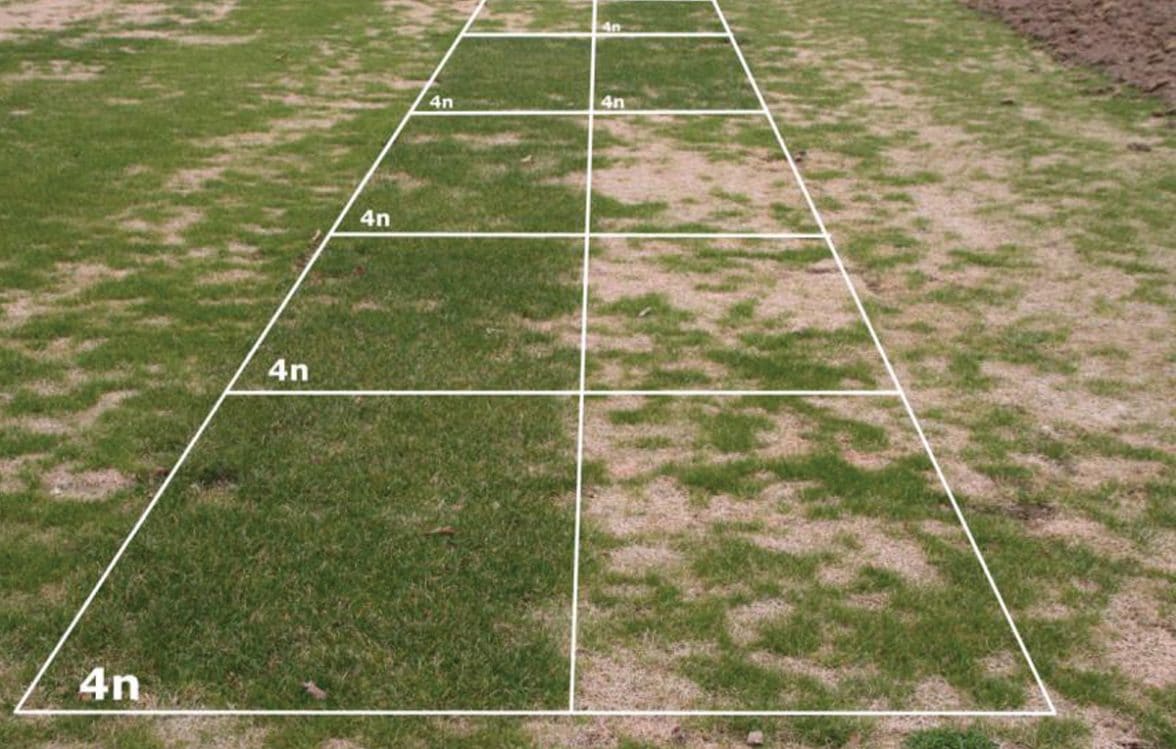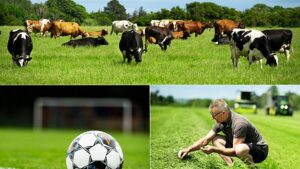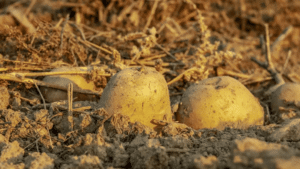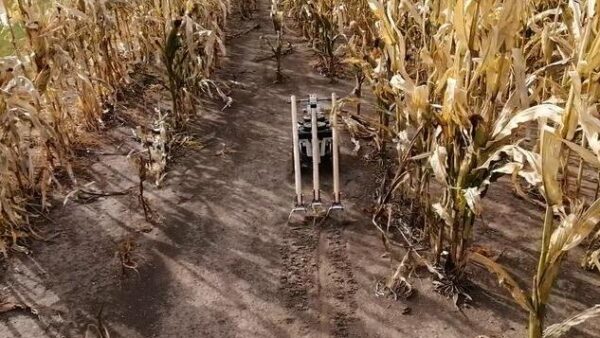Environmental shifts and turf usage are helping drive innovation in ryegrass.
Whoever thought that watching grass grow is the most boring activity on the planet can’t be more wrong. In this article, European Seed sat down with several ryegrass breeders to look at some of the very interesting developments that have happened and are still taking place in ryegrass breeding and we were amazed by the high level of innovation in the sector.
Tetraploidisation in Turf
Although polyploid organisms are very common in nature, we can assist nature by making artificial polyploidisation using colchicine, a natural product extract from plants of the genus Colchicum. Colchicine inhibits the formation of aster rays, which normally pull the duplicated chromosomes to the cell sides, allowing a cell wall to develop down the middle.
Plant breeders have made tetraploidisation of grasses for a long time, and the first tetraploid forage perennial ryegrass varieties were listed in the 1950s and 1960s. The goal was to improve forage yield and disease tolerance. In the United States and Europe, some attempts were made also in turfgrass during the 1980s, but without real success. Nevertheless, one variety called Juventus, created some interest due to its drought tolerance. It was listed in various countries and had some success in France at the beginning of the 1990s.
However, up against an impressive improvement of traditional diploid varieties (e.g. Greenfair, Greenway) at the end of the 1990s, it was difficult to recommend tetraploid material that lacked fineness of leaf compared with these new diploids.
Tetraploids Add Toughness to Turf
There are a number of challenges in breeding tetraploid turf varieties of perennial ryegrass, which by nature have traits more associated with forage than turf. The challenges are shoot density, broader leaves, and more frequent mowing. Fortunately, there are also some tremendous advantages: darker colour, better disease tolerance, and a general capacity to survive in hostile—dry, cold or hot—conditions, which is the main weak point of diploid ryegrasses. Diploids are well adapted to oceanic conditions, but suffer in more extreme climates.
Through intensive breeding efforts, turf quality in tetraploids is now getting much closer to that of the diploids. Slightly broader leaves and lower density are more than compensated for by the other unique qualities of tetraploid varieties, making them ideal components in turf mixtures—and mixtures play a major role in the turf business.
Improved Winter Disease and Drought Tolerance
In the early 2000s, DLF initiated a new breeding program using chromosome doubling in ryegrass, based on very dense diploid material. After some attempts, a breakthrough was made with the first listings of the tetraploid varieties Double and Tetragreen. Double showed a significant improvement of winter disease tolerance after testing in Scandinavian turf networks. Trialling in France proved Tetragreen to be one of the most drought-tolerant perennial ryegrasses. These varieties are available in various European countries, including Denmark, the UK, the Netherlands, Germany and France.
Next Gen Tetraploids
Due to an intensive and dedicated breeding program, the next generation of tetraploid perennial ryegrass varieties are available. While keeping the beneficial tetraploid traits, the variety Fabian has a density very close to diploid varieties. Tetrastar is a perfect complement of diploid varieties for sports pitches, due to the best compromise between density and disease tolerance. In addition, Tetradark, with its dark genetic colour, is adapted to Mediterranean regions, such as Spain, Italy and Turkey, and is an excellent match in mixtures with tall fescue.
Tetraploid ryegrass provides a very interesting solution for landscapers, sports field managers and golf course greenskeepers who care about sustainability, as these varieties require less water and pesticides.
A New Era Begins
During the 1990s, many plant breeding companies sought to develop DNA markers, which were linked to certain traits, such as disease resistance. While this task was straightforward in inbreeding species, it met with significantly more challenges in outbreeding species, such as grasses. The problem was the lack of solid linkages between markers and traits, which inherently follows the nature of outcrossing reproduction. Although several disease resistance markers were discovered in scientific experiments, mostly they could not be transferred and used in elite breeding material.
Genomic Selection
The solution came in the wake of next generation sequencing technologies, which were introduced in the mid-2000s. This technology allowed scientists to develop methods that could identify DNA variations (single nucleotide polymorphisms) between genomes on a large scale, and at affordable prices. Suddenly, hundreds of thousands of markers were at hand and the idea of performing genomic selection in grasses became a realistic scenario.
With respect to genomic selection, plants are selected based on their genetic potential, rather than data from the field. The method was already used for some years in animal breeding, but in contrast to animals, grasses are bred as families, not as single individuals—several scientific challenges had to be solved.
At Barenbrug, genomic selection is around the corner or already implemented. Also, higher throughput phenotyping systems are being studied or used in grass breeding. Other topics that are getting more and more attention are drought- and salt tolerance, nutrient use efficiency and insect resistance.
Expedited Breeding Process
In 2010, in collaboration with molecular geneticists at Aarhus University in Denmark, DLF started developing genomic selection in diploid forage ryegrass. By 2015, for the first time breeders were able to set up synthetic variety crosses based on genomic predictions. That same year, the company initiated genomic selection in tetraploid forage ryegrass, and is now moving into turf ryegrass. The benefits associated with the use of genomic selection in grass breeding include the following:
- breeders can shortcut field trials and, thereby, save up to four years of development time
- reduces the number of costly field plots due to pre-selection
- improves the options for selecting multiple traits simultaneously.
Genomic selection will make significant increases in annual breeding gains. The engine in the system is the prediction model, which associates each trait with a certain marker profile. With this model, every important trait can be estimated for each new breeding line based on its DNA marker profile.
Scaled-Down Field Trials
Field trialling will be scaled down to fewer lines, which are only used to train the prediction model according to the current conditions. The next step will be to develop prediction models for the best parent match, so unsuccessful crosses can be limited in the future. At this moment, genomic selection can only be justified in large species, such as perennial ryegrass, but this situation will certainly change if sequencing prices continue to drop.
Maturing Technologies
The company Germinal applies marker-assisted selection, which has the potential to improve the speed of breeding progress. Genetic modification has been possible in grasses for many years, but so far only some turfgrass varieties have been released (and not yet in Europe). Great care must be taken, as many grasses readily hybridise, and a forage grass to a grass farmer is often a weed to a crop farmer.
Theoretically, it should be possible to produce a grass that does not head under normal farm practices. This would provide a more even spread of forage production. The genes that suppress heading would be turned off for seed production by the application of an appropriate chemical.
There has been work on true hybrid ryegrass, distinct from crosses between Italian and perennial ryegrass. There has also been talk of greatly increased yields. These claims should be viewed with caution, since current varieties are restricted populations that already express considerable hybrid vigour.
Grass is everywhere and we as humans have been enjoying it for centuries. Whether we are having a barbeque in our garden, see our kids playing sports at school, watching a good game on a well maintained pitch, or having a nice picnic in the park, a good piece of grass is worth its weight in gold. Innovations in ryegrass breeding make sure that all those lawns, golf courses and sports pitches can keep up with the challenges they are faced with, and we can continue to enjoy grass for ages to come.













